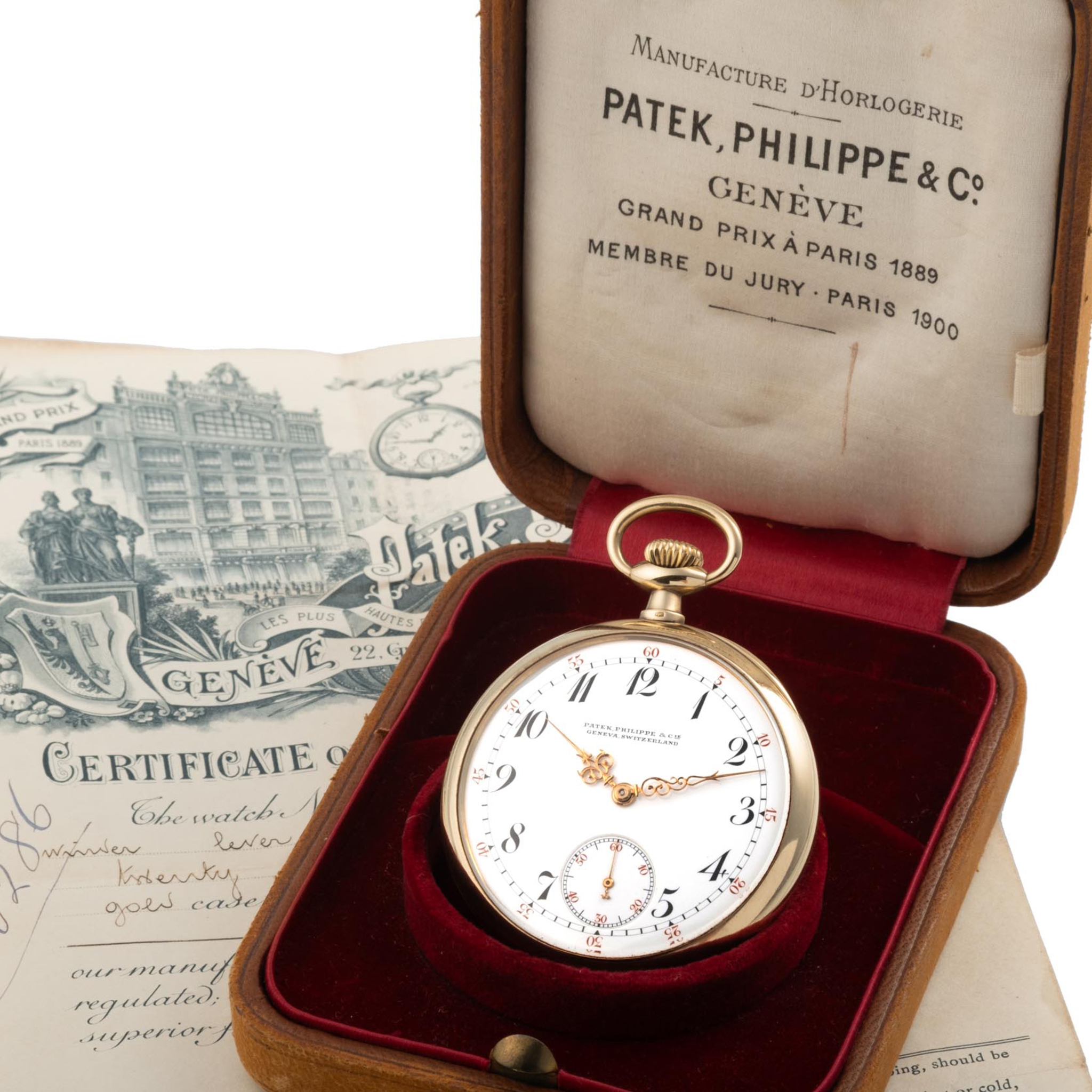Geneva, Nov 09, 2025
LOT 488
PATEK PHILIPPE, SWITZERLAND, ONLY THREE KNOW BLUE SAPPHIRE JEWELS MOVEMENT, MADE FOR BUNDE & UPMEYER CO., MILWAUKEE, WISCONSIN, 18K YELLOW GOLD
CHF 10,000 - 20,000
HKD 98,000 - 196,000 / USD 12,500 - 25,000 / EUR 10,800 - 21,500 / JPY 1,900,000 - 3,800,000
Sold: CHF 12,500
An extremely fine and extremely rare, 18k yellow gold, manual wind open-face, keyless-winding, pocket watch, white enamel dial with subsidiary seconds at 6. Blue sapphire jewels movement.
| Grading System | |
|---|---|
Grade: |
|
Case: 3 |
Good |
Movement: 3-6* |
Good Slightly oxidized Overhaul recommended, at buyer's expense |
Dial: 3-01 |
Good HANDS Original |
Brand Patek Philippe, Switzerland
Year Circa 1912
Movement No. 170578
Case No. 277842
Diameter 47 mm.
Caliber 40 mm., rhodium-plated, 18 blue jewels, wolf's tooth winding, straight-line calibrated lever escapement, cut bimetallic compensation balance, blued steel Breguet balance spring, swan-neck regulator.
Weight 76 gr.
Signature Signed on dial, case and movement, case and movement signed also by the retailer.
Accessories Original box and certificate
Notes
The most famous example is the “Edward Howard” watch, launched circa 1910 by the Keystone Watch Company in the United States. This extraordinary watch featured blue sapphire jewels, jeweled banking pins, and a free-sprung balance similar to the Gyromax system—well before Patek Philippe introduced its own Gyromax balance. At the time, it was considered a marvel of modern watchmaking. Its retail price was $350, slightly more than the price of a Ford Model T in 1916–1917 ($345).
Inspired by the success of the Edward Howard “Blue Sapphire” watch, Bunde & Upmeyer, an American importer, commissioned several Swiss makers—including Ekegrén, Koehn, and Patek Philippe—to produce similar pieces. Patek Philippe accepted the challenge and produced very few pocket watch with blue sapphire jewels, specially made for the U.S. market.
These watches are exceptionally rare today. Sapphire was more expensive and difficult to work with than synthetic ruby (which became standard after 1902), so only a handful of these special commissions were ever completed. Known surviving examples are usually found in private American collections.
The “blue sapphire” watches represent a unique chapter in horological history, highlighting both technical innovation and the dynamic exchange between Swiss and American watchmaking at the beginning of the 20th century.





